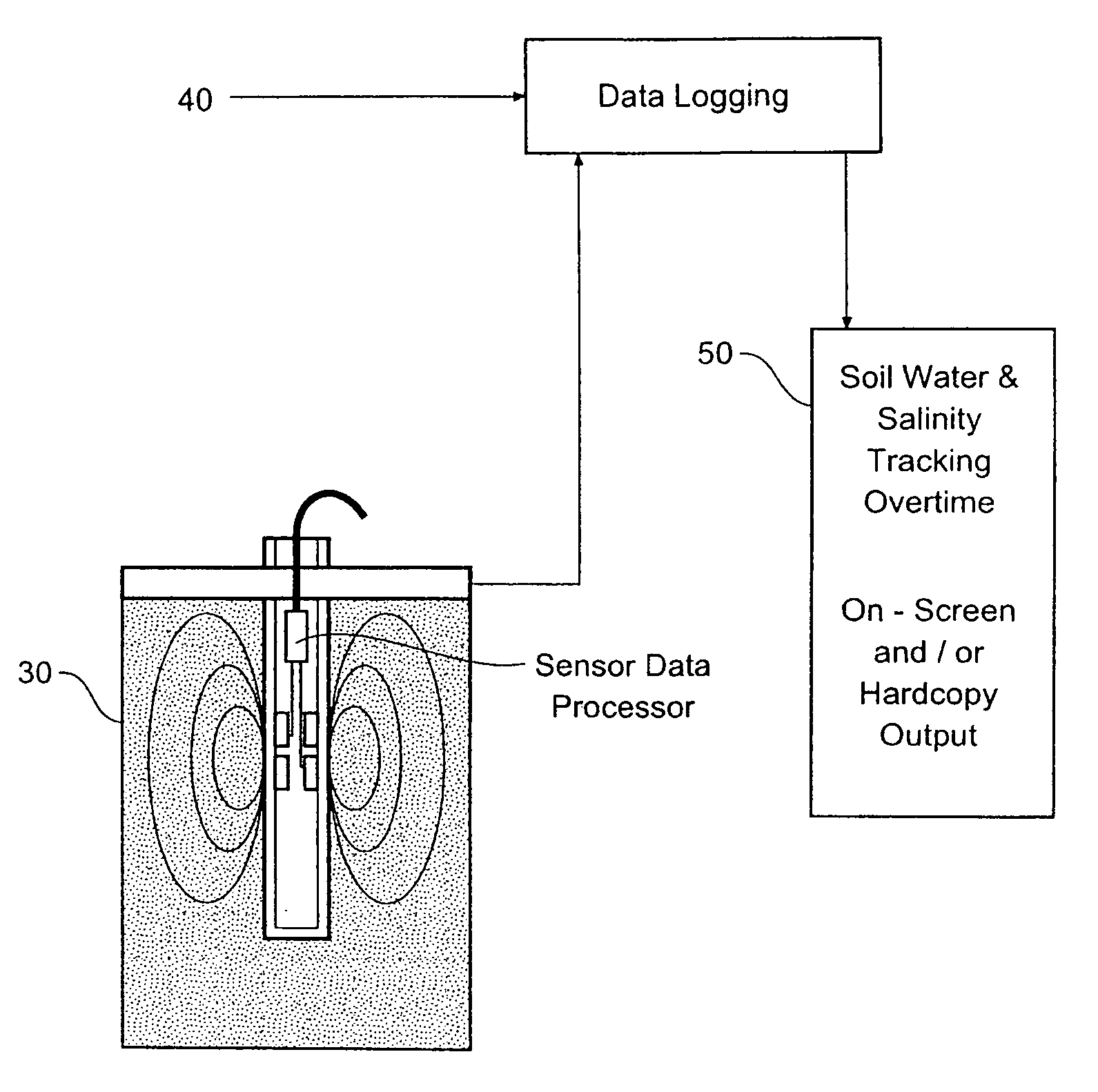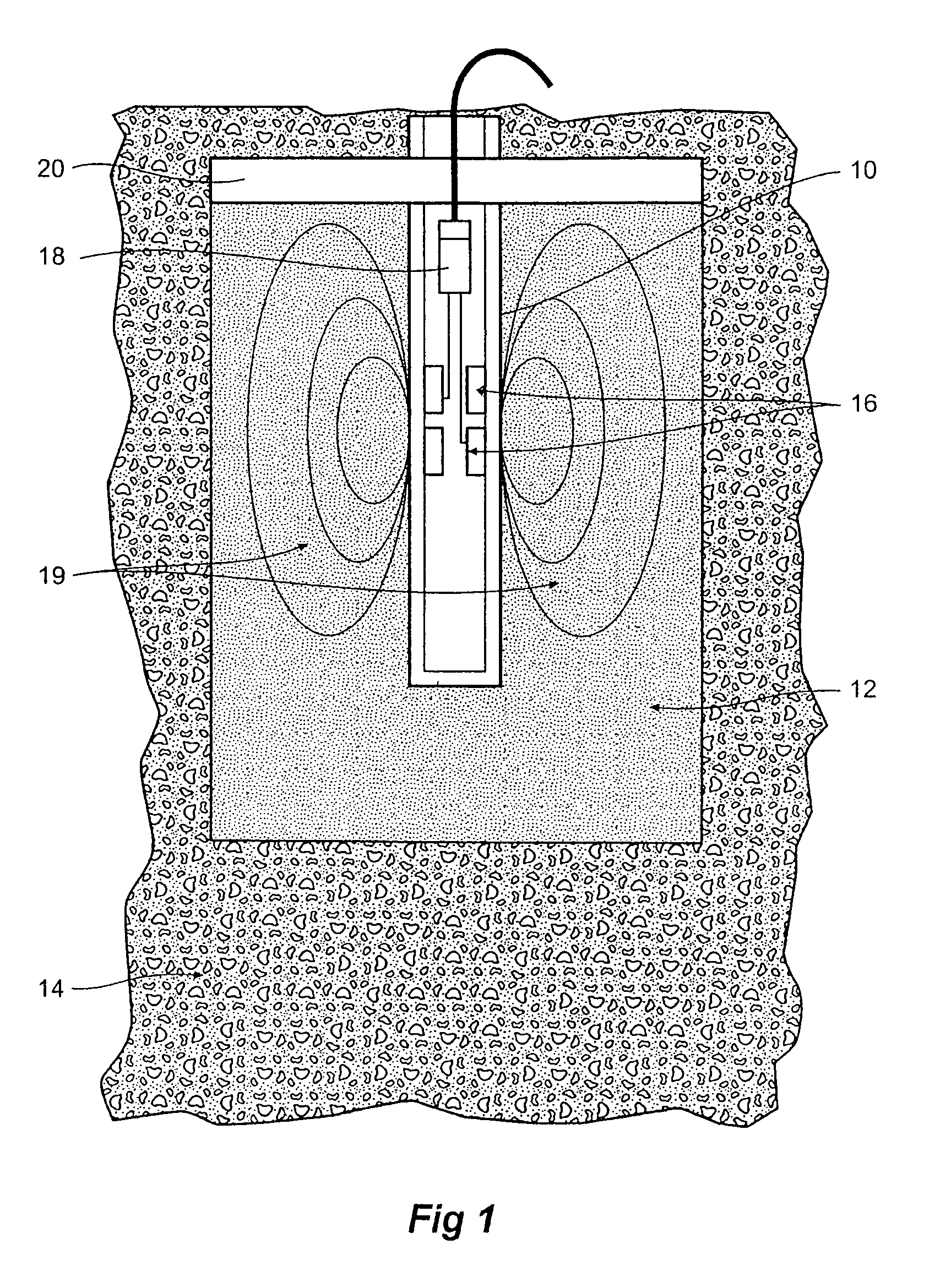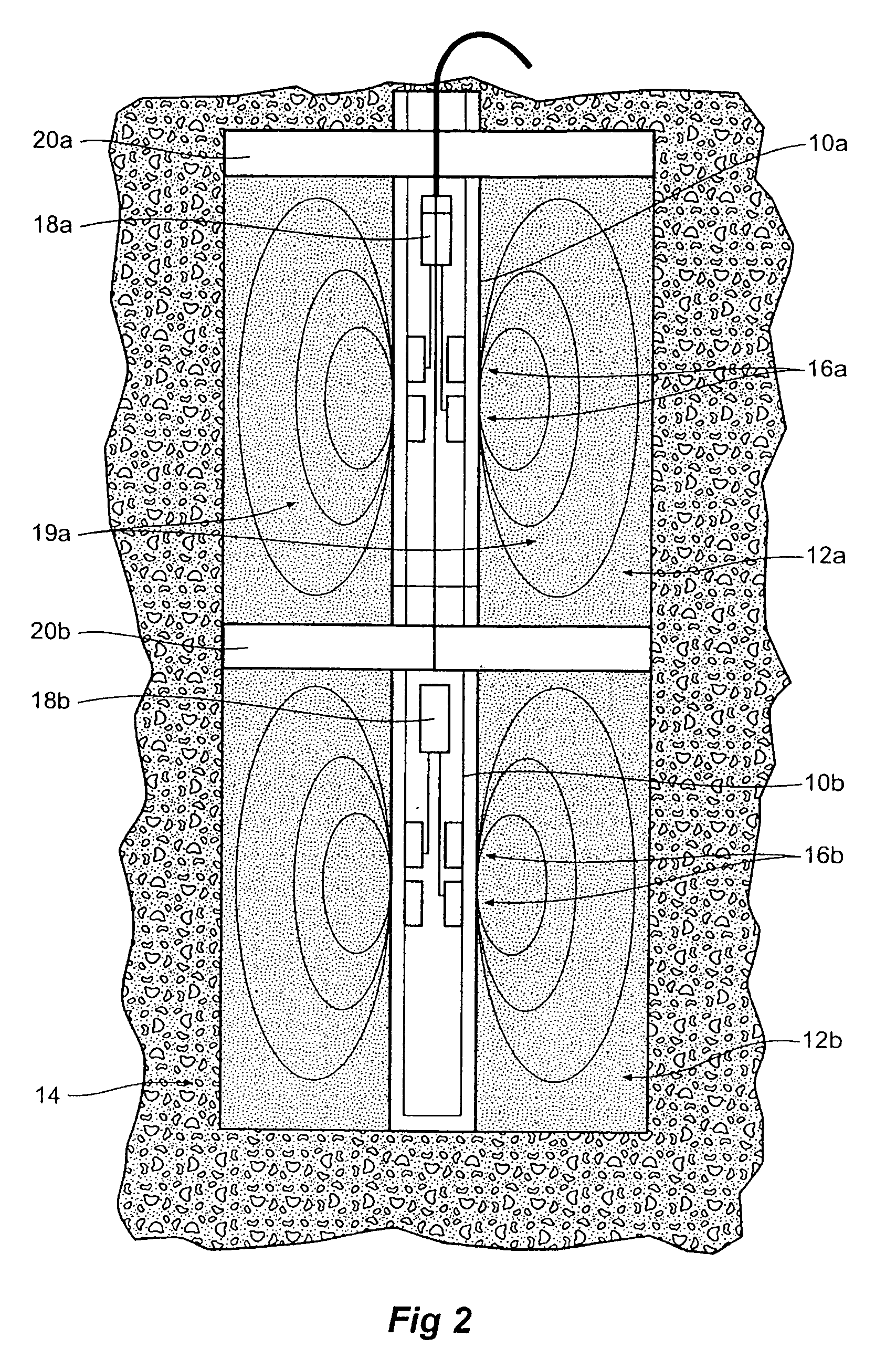Soil matric potential and salinity measurement apparatus and method of use
a technology of salinity measurement and matric potential, which is applied in the direction of material analysis, material testing goods, instruments, etc., can solve the problems of tensiometers with a variety of problems, irrigation amounts in excess of field capacity loss, and reduce the energy level of soil solution, so as to achieve the effect of not having any undue lag
- Summary
- Abstract
- Description
- Claims
- Application Information
AI Technical Summary
Benefits of technology
Problems solved by technology
Method used
Image
Examples
Embodiment Construction
[0095]FIG. 1 depicts a sensor 10 located in a single soil / compound installation 12 that itself is located in the soil 14 the moisture content and salinity characteristics of which are to be measured. Each of the elements described above is depicted in cross-section in FIG. 1 but the three-dimensional features can be readily implied.
[0096]The sensor in this embodiment is of the capacitive type, an example of which is disclosed in U.S. Pat. No. 5,418,466 the assignee of which is also the assignee of the patent associated with this specification. However, any sensor that uses electromagnetic radiation for providing soil moisture and salinity measurement capability can be used.
[0097]The sensor used in this embodiment relates to a device capable of providing moisture and salinity measurement. In particular to a sensor and its method of use that provides values for the complex dielectric constant of a medium. The values then need to be converted to volumetric soil moisture content (mm), s...
PUM
 Login to View More
Login to View More Abstract
Description
Claims
Application Information
 Login to View More
Login to View More - R&D
- Intellectual Property
- Life Sciences
- Materials
- Tech Scout
- Unparalleled Data Quality
- Higher Quality Content
- 60% Fewer Hallucinations
Browse by: Latest US Patents, China's latest patents, Technical Efficacy Thesaurus, Application Domain, Technology Topic, Popular Technical Reports.
© 2025 PatSnap. All rights reserved.Legal|Privacy policy|Modern Slavery Act Transparency Statement|Sitemap|About US| Contact US: help@patsnap.com



